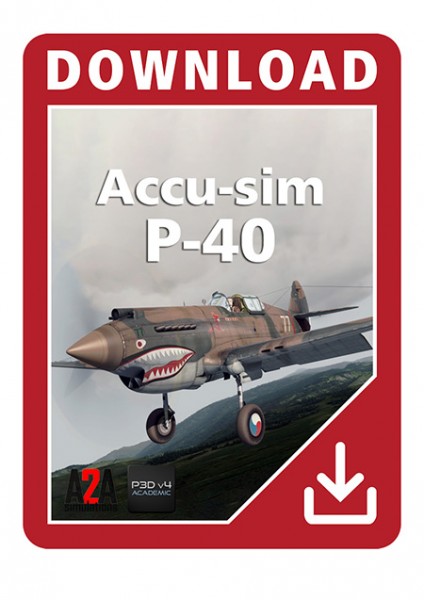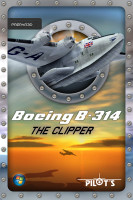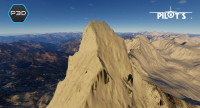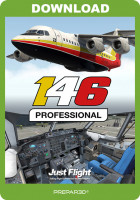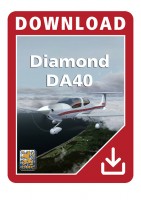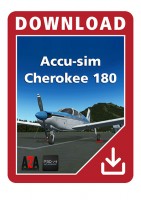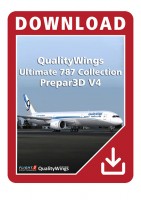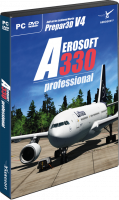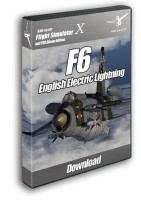Price incl. 20% VAT
Available as instant download
- Article number: AS14873
- Manufact./Publisher: A2A Simulations
- Language: English
- Current version: 1.00
The rugged P-40 with its Flying Tigers shark-toothed paint scheme may very well be the world’s most recognized image of an American Word War II fighter aircraft. Yet, the P-40 with all of its fame, still remains misunderstood even today. It was called under powered by some who perhaps, were quick to judge and never understood its true potential. But if you look at this aircraft, and the facts that surround it, you will see quite a different story. One fact that cannot be overlooked is, when in the hands of Colonel Chennault, commander of the AVG (American Volunteer Group), his then controversial hit and run tactics ended up giving that group the worlds highest kill ratio which is still not matched to date. It was not without its flaws, but when you compare the technologies and performance against aircraft being developed by other nations at that time, you will see quite a remarkable aircraft.
This version of the Accu-sim P-40 is for P3D V4/V5 Academic only, please make sure that you have the right matching P3D version.
Part of the secret of the P-40 was in it’s rugged Allison engine and its high dive speeds. Some squadrons pushed it’s capabilities well beyond its official limits in combat. This high power matched with an air frame that held onto energy better than the Japanese counterparts, meant an experienced pilot could command the fight. He could decide when to engage and when to escape. When we read about Middle East and Australian squadrons over-boosting their Allison engines, we couldn’t wait to Accu-Sim this bird and experience it ourselves. This resulted in us digging even deeper into not just the function of this engine at such high power levels, but the sound.Additionally, other systems like the P-40’s unique hydraulics required us to take our Accu-Sim to yet another level of detail. You may notice when a fighter raises it’s gear, the gear sometimes comes up at different times. Instead of us simply and without condition, telling the aircraft to raise the gear one leg at a time, we decided to dig deeper and create the entire underlying system, allowing whatever behaviours be the result of actual systems at work. In fact, this is the philosophy behind Accu-Sim from the start. Build it right, and enjoy the experience. When looking to the construction, the newest modelling and advanced material-making techniques results in an aircraft that you can just spend not just minutes but hours admiring the beauty of the shape and look of the aircraft. Together, with professionally recorded sounds and physics, the end result is the sense of having a complete, real, majestic, raw, flying machine stuffed inside your computer. We hope you enjoy your new beautiful bird, and hope you learn to fly and treat her well.
Features:
- Rugged, fast, and manoeuvrable.
- As with every A2A aircraft, it is gorgeously constructed, inside and out, down to the last rivet.
- Designed and built to be flown “By The Book“.
- Functional mirror (Can to fine tuned or turned off to suit performance needs)
- Custom Cockpit Systems and Gauges.
- Visual Real-Time Load Manager, with the ability to load fuel and stores in real-time.
- Naturally animated pilot.
- Dynamic Cockpit Lighting
- Pure3D Instrumentation now with natural 3D appearance with exceptional performance.
- Sound engineered by A2A sound professionals.
- Oil pressure system models oil viscosity (oil thickness).
- Authentically modeled pneumatic system.
- In cockpit pilot’s map for handy in-flight navigation.
- Auto-Mixture that actually performs as intended. Now you can set for “auto-rich” or “auto-lean” and the aircraft fuel-to-air ratio will be automatically determined and set by the carburetor based upon various factors, such as altitude.
- Five different models, P-40B, P-40C, AVG model, RAF Tomahawk, and Russian Tomahawk.
- Internal Supercharger modeled with accurate behaviour.
- Fuel delivery system simulated.
- All models include A2A specialized materials with authentic metal.
- Pilot’s Notes pop-up 2D panel keeps important information easily available.
- Introducing a true propeller simulation
- Feel the exhilaration of flying an Accu-Sim-powered P-40 Warhawk.
- Allison V-12 liquid cooled V-1710-33 (C15) engine built to manufacturer’s specifications.
- Curtiss multi-position and / or constant speed type electric propeller.
- Inertia starter with inertia wheel and engagement.
- Dynamic ground physics including both hard pavement and soft grass modeling.
- Immersive in-cockpit, physics-driven sound environment from A2A engineered P-40 recordings.
- Complete maintenance hangar including landing gear, internal systems and detailed engine tests including compression checks.
- Understand how a high-performance aircraft behaves and see how well you can cope with all of the unexpected things that can happen. No two flights are ever the same.
- Piston combustion engine modeling. Air comes in, it mixes with fuel and ignites, parts move, heat up, and all work in harmony to produce the wonderful sound of a V-12, liquid-cooled racing engine. Now the gauges look beneath the skin of your aircraft and show you what Accu-Sim is all about.
- Airflow, density and it’s temperature not only affect the way your aircraft flies, but how the internal systems operate.
- Real-world conditions affect system conditions, including engine temperatures. Manage temperatures with a radiator flap and proper flying techniques.
- Spark plugs can clog and eventually foul if the engine is allowed to idle too low for too long. Throttling up an engine with oil-soaked spark plugs can help clear them out and smoke.
- Overheating can cause scoring of cylinder head walls which could ultimately lead to failure if warnings are ignored and overly abused.
- Large engined aircraft like the P-40 like to be in the air, not on the ground. So don’t idle for too long, get in the air where the air supply is plentiful
- Engine, airframe, cockpit panel and individual gauges tremble from the power of a high-performance combustion engine.
- Authentic component drag. Dropping your gear will pull your aircraft realistically as the landing gear is deployed along with cooling flaps, ordnance and even opening the canopy. Drop your gear, deploy your flaps, or just try a dive, and listen to your airframe.
- System failures, including flaps that can independently jam or break based on the actual forces put upon them. If you deploy your flaps at too high a speed, you could find yourself in a very dangerous situation.
- Total audible cockpit made with recordings from the actual aircraft. Before you fly, enjoy clicking everything.
- Physics based Rain on Canopy effects
- Primer system modeled - Accu-Sim monitors the amount of fuel injected and it’s effectiveness to start the engine. Cold mornings require as many as 12 strokes and warm starts may only need a single shot.
- Authentic battery - The battery capacity is based on temperature. The major draw comes from engine starting.
- Oil pressure system is affected by oil viscosity (oil thickness). Oil viscosity is affected by oil temp and oil dilution level. Now when you start the engine, you need to be careful and not raise RPM too much until oil temp is high enough to give proper oil pressure. If you raise RPM too high on a cold engine, especially very cold, oil pressure can raise to over 150 psi. Oil pump failure can result. Extended inverted flight (negative g) can uncover the oil sump and reduce oil pressure. Do not fly in a negative g situation for more than 5 seconds.
- Oxygen starvation (hypoxia) is modeled - Just take off and climb without oxygen to see
*This version is for academic users in Prepar3D, in accordance to the Lockheed Martin Prepar3D academic license. This software is to be used for flight simulation only, and not to be used for real world flight training. For real world flight training, use our commercial license which is intended to be used with flight simulators authorized by the FAA while using our software.
Lockheed Martin Prepar3D V4/V5 Academic*
Operating System: Microsoft Windows 10 (64bit)
Processor: Quad Core CPU with 3.5 GHz
Memory: 16 GB DDR4 RAM, 2666 MHz
Graphics card: 4 GB VRAM, DirectX 11
Free disk space: 2.1 GB, SSD highly recommended




.jpg)
.jpg)
.jpg)
.jpg)
.jpg)
.jpg)
.jpg)
.jpg)
.jpg)
.jpg)
.jpg)
.jpg)
.jpg)
.jpg)
.jpg)
.jpg)
.jpg)
